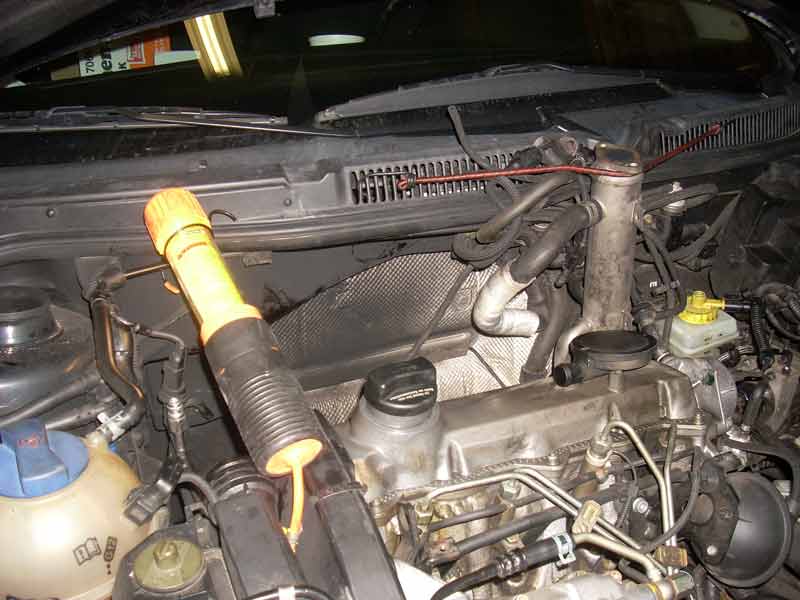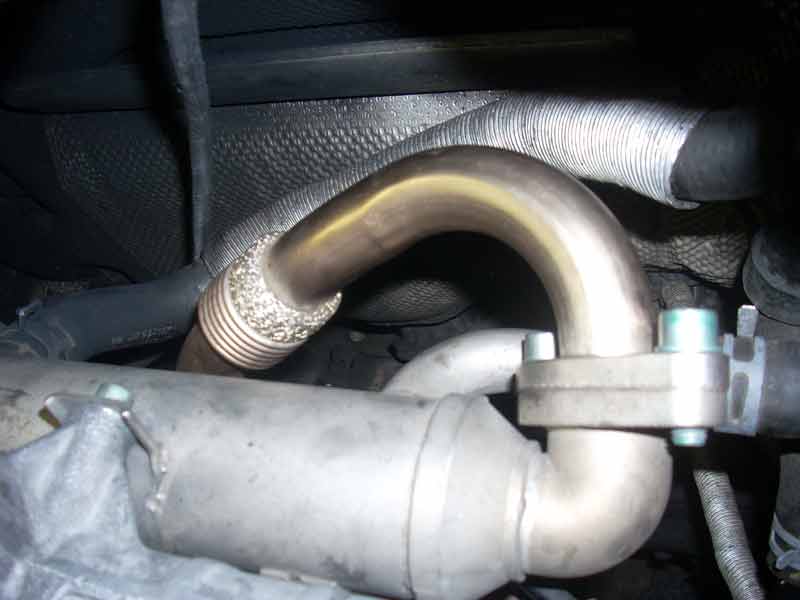Been cruising YouTube lately watching old Almost Live! clips and found this one from 1989. All the best things happen in Tukwila.
Car Photo of the Day: Aging Gracefully

This photo either requires cropping or some judicious use of photoshop to clean up a cluttered and distracting background, but here I present it in raw form. Taken on the 2007 NW Classic Rally this is a view of a 1960 Aston Martin DB4, piloted by Duane Crandall and navigated by Bill Vilardi. Duane’s Aston is a true “driver” that has a well-worn patina that looks as comfortable on the car. Akin to a well-worn pair of jeans or a beloved baseball mitt, this level of wear is in many ways something that makes the car even more beautiful to those of us who really love cars. Museum-quality shiny brightwork has its place… namely a museum, and seeing impossibly perfect cars on the road is always a bit jarring, akin to seeing a middle-aged person wearing clothes better suited to a teenager.
I always perform a good spring cleaning of the Jaguar after I’ve completed all the winter projects that accrued over the driving season (this winter includes a rebuild of the tachometer, fixing the passenger side window, updating the dashboard lighting, and a close inspection and perhaps rebuild of the rear brakes) but a cleaning really can’t ever restore away true patina. My car has road rash, oil leaks, and wear here and there. Duane’s car pictured here is the same; with signs of loving use, but it will never be mistaken for a showroom-fresh car, which is what it is not. This car is approaching fifty years of age.
Seattle Area Turkey Fryer Oil Disposal
Did you fry a turkey this Thanksgiving? Need to dispose of your used oil? Live in the Seattle area?
If you live anywhere between Renton in the south and Stanwood in the north, I’ll happily pick up your used oil for use in making biodiesel. I can make a curbside pickup any time in the next week or so. Just put the oil back into the containers it came in, and contact me. If you need containers I can supply 5 gallon buckets.

Four Book Mini-Reviews

I’m usually pretty good about updating my site here with goings on in my life, but I noted that I’ve neglected to update my “what I’m reading now” links over there ->
…since late summer. It still has the book I stole from Christopher after our road trip. I finished it a long time ago and have since plowed through three other books in my rare snippets of free time. I mostly only find time to read on my lunch hour, which is a shame. I love to read, and always have a book or two that I’m into at any given moment. Though I carry them around more than I ever am able to clear my mental decks and dedicate time to them. Lunches during the work week are like a brief oasis for me. I grab a bite, then sit down and pore over the printed word for 30 to 45 minutes. It is as refreshing as a nap in many ways. It allows me to forget about work, deadlines, projects, whatever else is happening and absorb more abstract things.
To make up for my lack of updating, I’ll write up mini-reviews of all these books:
1. P. J. O‘Rourke on The Wealth Of Nations
On the back cover is a blurb, which sums up this book best: “P.J. O’Rourke reads Adam Smith so you don’t have to”.
I have a great admiration for the Scottish Enlightenment thinkers, especially David Hume and Adam Smith. In many ways their eminently pragmatic philosophies were an inspiration to the contemporary generation of intellectuals here on this side of the Atlantic, who sought to apply those philosophies in the construction of a new sort of system of government. Smith in fact, as a recognized intellect was asked by the British government what to do about the break-away colonies and provided the ultimately pragmatic advice (which of course took a few generations to be heeded) which basically said: Let them go, and then trade with them. It was so simple really. Low cost, with a high return. Rarely do we have the courage to take such simple steps like this, so we end up killing one another at a very high cost and low rate of return.
But actually reading Smith’s work? That is tough. It is written in Eighteenth Century English, and makes many references to many instances of then-recent history and culture, much of which are lost on a Twenty-first Century reader. Further, Smith paints paragraphs with such minutiae that reading his great works “Theory of Moral Sentiments” and “Wealth of Nations” is akin to watching Barry Lyndon, one frame at a time on your DVD player. Sure it is beautiful, artful, and intricate, but you’ll burn up a year of your life doing it.
P. J. O’Rourke is a lunatic. One I’ve enjoyed reading since my college days when he was writing for National Lampoon in their heyday. He does a fantastic job of creating a sort of Cliff’s Notes of Wealth of Nations filled with humor, insight, and examples from our lifetimes to illustrate how perceptive and prescient Smith was in his philosophies. Best of all O’Rourke does this in under 200 pages. It is a quick read and thoroughly enjoyable.
While I have always believed that the Chinese invented Capitalism, (how they became Communists is baffling to me) it was the Scots (mostly Smith) & Dutch who stripped it of all the trappings and encumbrances of Monarchy, Mercantilism and Religion; codified it within a moral framework, and gifted it to society. It would do well for people who claim every market down-cycle as a “failure of Capitalism”, or that Capitalism lacks a foundation in morality to give Smith a read. If plowing through a few thousand pages of Eighteenth Century English is too laborious, then grab this quick, witty summary and laugh your way through it.
2. Flyboys.
I grabbed this book off our bookshelf at home when I misplaced “Go Like Hell” for a few days. Within a page or two I was hooked and quite literally could not put it down. I chewed through it in a matter of days, often reading it as I walked to and from my car at work. Author James Bradley (“Flags of our Fathers”) uncovers and reveals the previously un-told fate of a handful of US Navy & Marine pilots shot down while bombing a Japanese-held island during WW2. The Island is Chichi Jima, which lies between Iwo Jima and Japan. Not a site of an epic battle like Iwo, it nonetheless was a critical outpost and serves as a microcosm of the larger conflict and the societal and personal impacts of that war. Using previously classified documents and first-hand interviews with survivors from both sides of the conflict it tells a gripping tale of the toll of total war on all the participants. Bradley admirably lays out facts of horrific brutality, from all sides.
3. Go Like Hell: Ford, Ferrari, and their battle for speed and glory at Le Mans.
The “Ford” and “Ferrari” in the title refer as much to men as to marques, as this book is as much about Henry (the 2nd) and Enzo as it is about the machines from Detroit and Maranello. It also covers other legendary men such as Ken Miles, John Surtees, Phil Hill, Carroll Shelby, Lee Iococca, Bruce McLaren, Masten Gregory, Dan Gurney, Luigi Chinetti, Walt Hansgen, Dennis Hulme, Mario Andretti, and many more. The star of the show though is the legendary Ford GT40 and its rise from concept to champion at the pinnacle of sports car racing history: The 24 Hours at Le Mans. Ferrari famously snubbed (at the last second) an offer to buy his company by Ford, and “the Deuce’s” response was to hit Ferrari where it hurt the most: on the racetrack. A. J. Baime’s book is a thrilling read for any motorhead, as it recounts the tale of this rivalry at Le Mans throughout the 1960s. This was a time when the technology of speed was being refined and cars evolved at a shocking rate, as did the shocking carnage as it has taken safety technology decades to close the gap. A good number of those drivers named above did not survive to their old age, most famously Ken Miles and Walt Hansgen whose deaths are directly linked to their GT40s.
I heard on Adam Carolla’s podcast that a movie is in the works based on this book. That said, I suggest that you read this book as I’m sure Hollywood will screw it up somehow.
4. Crusade: The Untold Story of the Gulf War.
Hindsight tells us that this book, published in the mid-90s was a bit premature, as in the scope of history the “Gulf War” is still going on today and remains unresolved, far more than it was when Schwartzkopf lead the Victory Parade in mid-1991. It was the presence of American soldiers in Saudi Arabia that prompted the fusion of Osama bin Laden with the Egyptian Islamic radicals into the 9/11 plotters. Of course this book is not about that forest, but the single tree of the expulsion of the Iraqi Army from Kuwait that started the whole affair. The book presents a chronology from the perspective of US military command, with occasional diversions into personal stories of minor participants. It is a worthwhile read, if only to see into that small and rarified world. Many of the people and places involved have familiar names that come back to haunt us in the following decade. My biggest complaint about this book is really one of layout and design. The maps, which are critical to diagramming text onto physical reality are all bunched in the back and are too small to be of any use.
A Jaguar, glimpsed in its natural habitat.
On a back road in France…
Zen and the Art of Automobile Maintenance

I read Robert Pirsig’s famous novel when I was a teenager. The bits and advice about methodical working styles stuck with me. I’m not OCD about my workspaces, but I do tend to make project-based clearings and step-by-step layout of parts to keep myself on-track. I even used these methods back in the days when I was doing paste-up production in the pre-computer era.
For my current EGR & intake manifold cleaning, and EGR cooler pipe replacement job I put the Jetta on the lift and created a large work-table in front of it with two 55 gallon drums and a large sheet of plywood. I printed out two “how to” PDF’s from tdiclub.com and stacked them on the lower left side of the table. As I pulled off parts I laid them atop their respective sheets, and numbered the sheet. I laid them out right-to-left, and bottom-to top along the table (backwards for a western reader that is.) This way when the time came to reassemble the car I start at the upper left, and then worked my way through the steps in an organized fashion. Outside of that workspace may be abject chaos, but within it, all is perfectly ordered.
This describes my whole life pretty well actually! 😉
Tonight after dinner I was finally able to start the reassembly. I’m still missing ONE part, so I can’t drive the car tomorrow, but I was able to get through the really hard work tonight. I’m so glad that: 1. I’ve done this job before, and 2. I put the car on the lift. Last time I did it while it was parked on the ground and had two things that drove me crazy. One was leaning over the car for so long while working bolts way at the back of the engine. The other frustration was re-attaching the intake pipe at the turbocharger, which is way down on the back of the engine. By putting the car on the lift I was able to raise it and tackle this job from underneath much easier than from above.


I picked up a “new” EGR cooler intake pipe from a local VW wrecking yard to replace my cracked one, along with a new intake manifold gasket. The only thing I’m missing is an o-ring for the intake manifold side of the EGR. I’ll stop by NAPA near my office tomorrow and grab one.



The issue last time was reaching down and re-attaching that hose clamp you see at the bottom of the intake pipe. Threading that puppy down there sort of makes getting your arm down there, with pliers in hand, rather difficult. By lifting the car a bit, I was able to reach up from below and snap it on pretty easily.
So all the really nasty bolts-in-mirrors and thread-arms-through holes jobs are done. Once I can source the proper o-ring I should have the car running again in a matter of minutes, as I just need to install the EGR, the EGR cooler outlet pipe, the rest of the intake system (two hoses and the air-cleaner box), some vacuum hoses, and the engine cover.
Car Photo(s) of the Day: Knock it off!

Inspired by the photos of Borrani wheel nuts on Ferrari Craft today, I decided to post a far wider array of unique knock-offs. Here are a dozen. Can you name the cars they are mounted on?










